Organisers of Dussehra events near train tracks tell ThePrint they take several precautions, besides being in touch with railway authorities for coordination.
Chandigarh: Barely half an hour before a speeding train mowed down 60 people at Joda Fatak as they watched Ravan go up in flames on Dussehra evening in Amritsar, another Ravan was turning to ashes 10 feet from the same train track in the small town of Verka. And this, on a piece of land that belongs to the Indian Railways.
In fact, not just Amritsar, the ritual burning of the Ravan is a disaster waiting to happen across several cities and towns in Punjab. In Ludhiana, Sangrur and Mansa, thousands gather at locations precariously close to train tracks to watch the firecracker-stuffed effigy burn down — some of these sites are barely a few feet away from railway lines.
Verka, Amritsar
In Verka, known for its famous milk-processing plant, Dussehra has for years been celebrated right next to the Amritsar-Pathankot railway line, as has the Ramlila in the preceding nine days.
A barbed wire marks the periphery along a part of the land, to separate it from the tracks barely 10 feet away.
Manjinder Singh, the president of the Shri Ram Krishana Ramlila and Sports Club, which organises the Ramlila and Dussehra festivities, said the two events had been held on the spot since 1993.
“There has never been any untoward incident… We take all possible precautions,” said Singh.
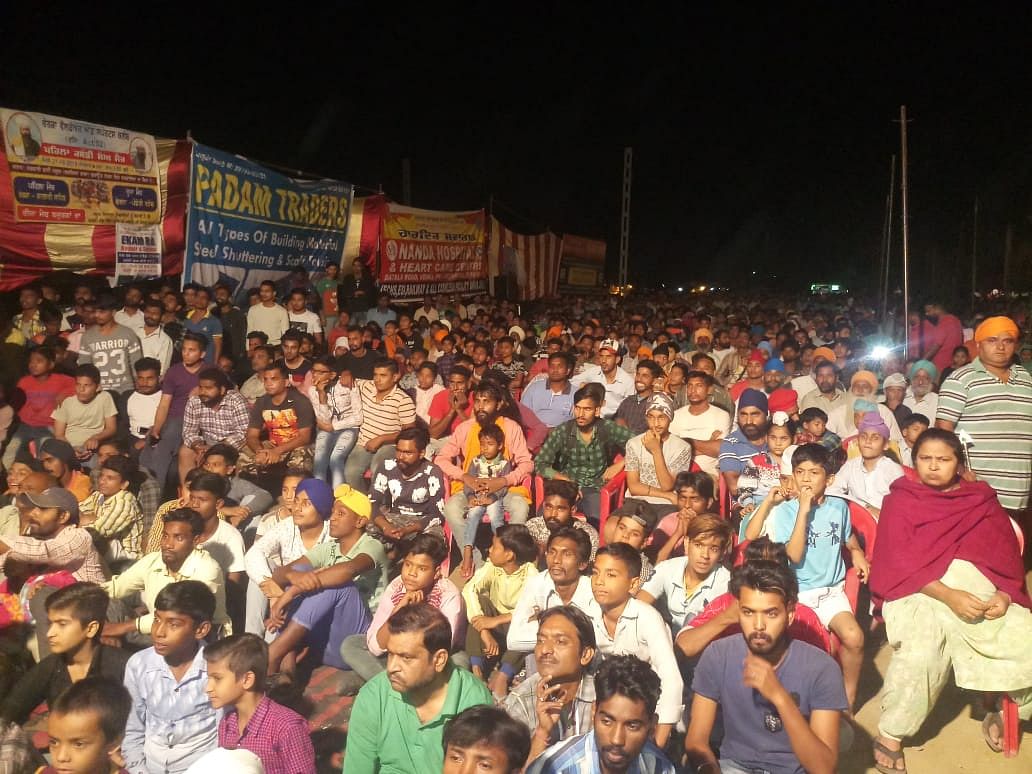
Apart from the barbed wire, Singh said, they put up a cloth partition across the length of the ground to block the view of the ground from the other side.
“This is to ensure that the Ramlila is not seen from the side of the train tracks,” he added. “Otherwise, every evening, there will be people squatting on the tracks to watch the Ramlila.”
He said they didn’t have official permission from the railways to use the land, but the latter “cooperated”.
“We, however, have permission from police,” Singh added.
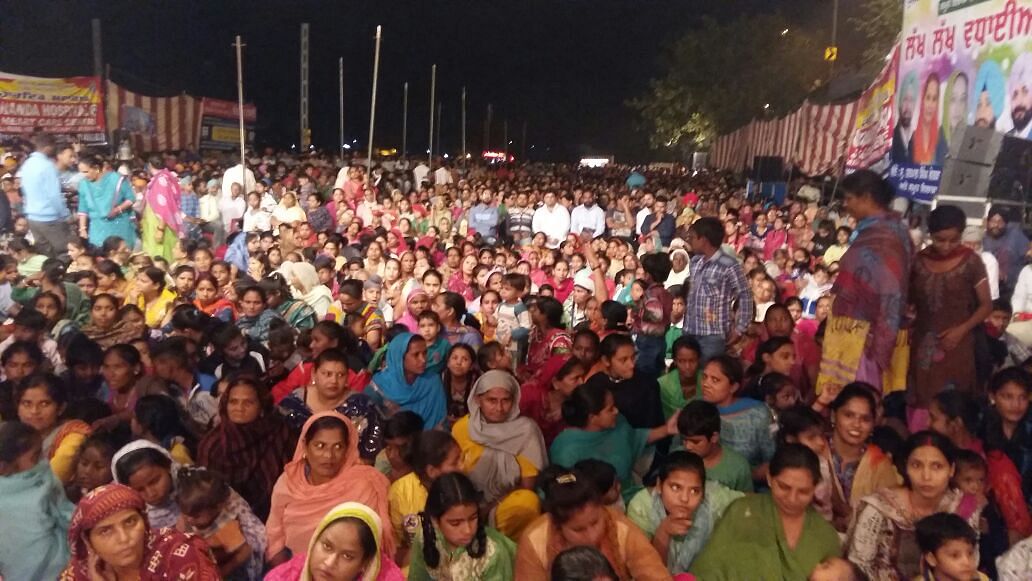
The crowd is manageable during the Ramlila days and stays within the barbed boundary, but the numbers swell on Dussehra and people still spill over to the tracks in their bid to catch the Ravan alight.
Saawan Kumar, a singer who hosted this year’s Dussehra event at Verka, said they made a conscious effort to warn the crowd. “We constantly made announcements… for people to stay away from the tracks,” he said.
“Two trains pass during the time the Dussehra event is going on,” said Arun Kumar, another organiser.
“The district police, the railway police and at least 30 of our volunteers remain alert and ensure that onlookers do not stand on the tracks,” added Singh.
Singh said Punjab cabinet minister Navjot Singh Sidhu’s wife Dr Navjot Kaur Sidhu, the chief guest at the Joda Fatak event, was also the guest of honour at their celebration. It was after the festivities at Verka that she left for Joda Fatak, he added.
Despite the precautions they claim to take, however, the organisers remain shaken by last week’s tragedy.
“Whatever happened at Joda Fatak was unfortunate,” said Singh. “It has scared us too. We have decided to shift our festivities to another place next year.”
Ludhiana
An hour before the Joda Fatak incident, over 100 km away in Ludhiana, more than 10,000 people watched the sibling-trio of Ravana, Kumbhkaran and Meghnaad put to flames barely 30 feet from a railway track at Millerganj.
A video made by a spectator from the roof of a house nearby showed a train chugging along at snail’s pace on the track, which is swarming with onlookers. The onlookers moved away as the train crossed and, once it passed by, they covered the tracks again.
Parminder Singh Kaka of the Azad Dussehra Committee, the organisers, said their Dussehra celebration was one of the oldest and most popular in Ludhiana. “We have been organising it for 45 years,” he said. “Trains pass by when the festivities are on, but not one person has ever got as much as a scratch.”
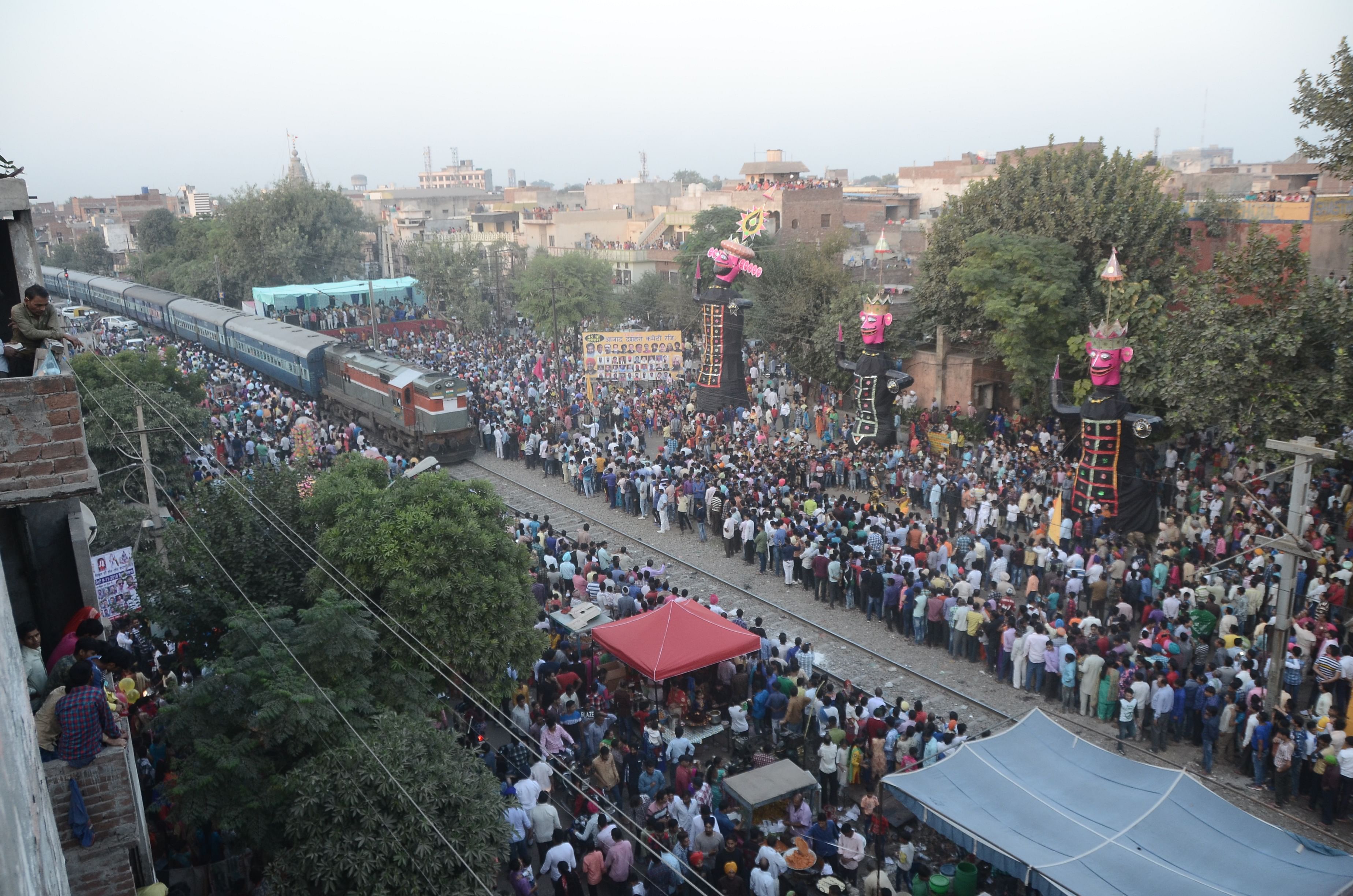
He credits this achievement to a coordination effort that involves the district and railway authorities. While this Dussehra event was conducted with the permission of the district administration, Kaka said they also approached the railway authorities for cooperation every year.
“We request them to inform the train drivers in advance,” he said. “Then we have two volunteers sitting at the railway crossing. They inform us when the train reaches the crossing. Our volunteers on the spot step into action and ask the public to vacate the lines. They take help of the railway and district police.”
Also Read: Amritsar train tragedy: Congress leader behind Dussehra event hadn’t informed railways
“It is done smoothly, without a hitch,” he added.
While the train that ran over 60 spectators at Joda Fatak was going at 90 km/h, the ones crossing the Millerganj line during Dussehra ran at no more than 5-10 km/h.
“There are times when the train drivers shout Jai Siya Ram while crossing the Dussehra site,” Kaka added.
Sangrur
Residents of the Ram Nagar basti in Sangrur, over 220 km from Amritsar, have been organising their Ramlila and Dussehra events next to train tracks for years. The site of the festivities is barely 10 feet from the end of a cargo train platform.
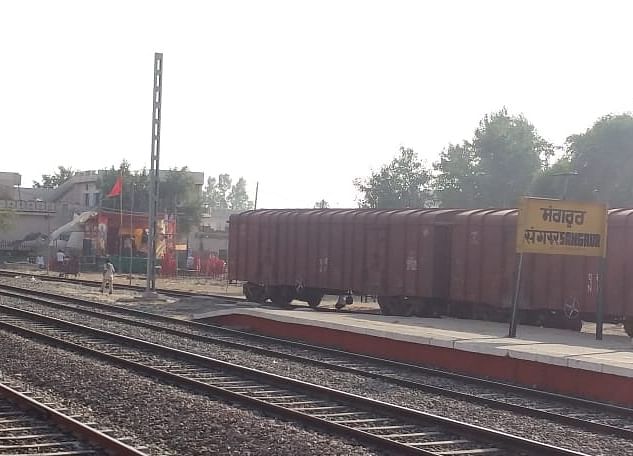
“Railway employees are among the organisers,” said Charandeep Singh, in charge of the local railway police post.
When the Ravan is set alight, people cross the railway tracks and gather on and around the platform to watch. There is also the added threat of trucks that keep arriving with goods to be loaded on to trains.
“On any given day, when the Ramlila is going on, there are not more than 50 people watching,” said Singh. “On Dussehra day, the numbers swell to over 100. Since the spot is close to the junction, people also watch from the platforms.”
“It becomes quite crowded. We keep a tight watch on the site. The organisers don’t seek permission from us. Maybe the subdivisional magistrate (SDM) gives them permission,” he added.
Sangrur SDM Avikesh Gupta said the organisers had permission to organise Ramlila, but not Dussehra.
Mansa
The Dussehra event at Mansa, nearly 250 km from Amritsar, is held in an open ground that stands almost opposite the Mansa railway station. Owned by Khalsa School, the ground is separated from train tracks by a narrow strip of road.
Also Read: Public anger mounting over Amritsar train tragedy as authorities play blame game.
“The school ground has a boundary wall, except for the area next to the tracks,” said a local shopkeeper.
“The Ravan is burnt in a part of the ground that is away from the tracks,” he added, saying the ground managed to contain the crowds. “The ground is big enough to hold a crowd of over 10,000 people.”
Locals, however, pointed out that the real risk here lay in the fact that several spectators crossed the tracks to reach the ground.
Jagjit Singh, who is the in charge of the railway police post at Mansa, said it was a big headache to control the crowd on the tracks.
“The two platforms on the railway station are full of people [spectators],” he said, “We have to be on our toes to keep people from crowding the tracks. People don’t even listen.”



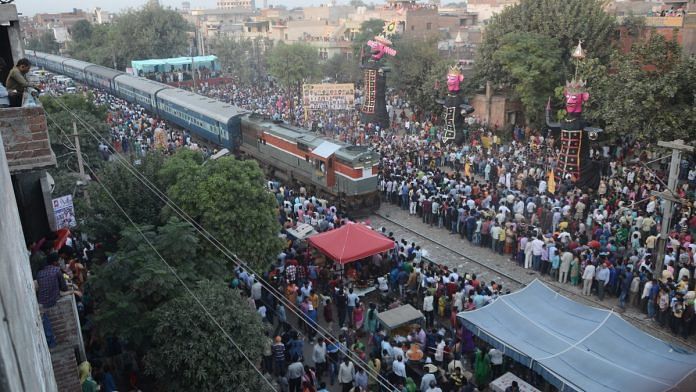



At least for the future, take more care.